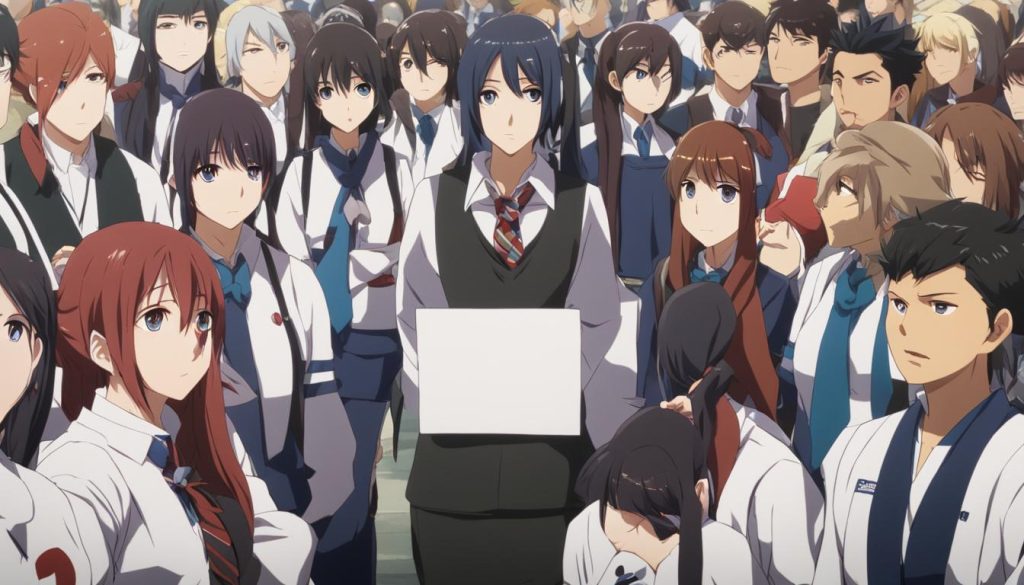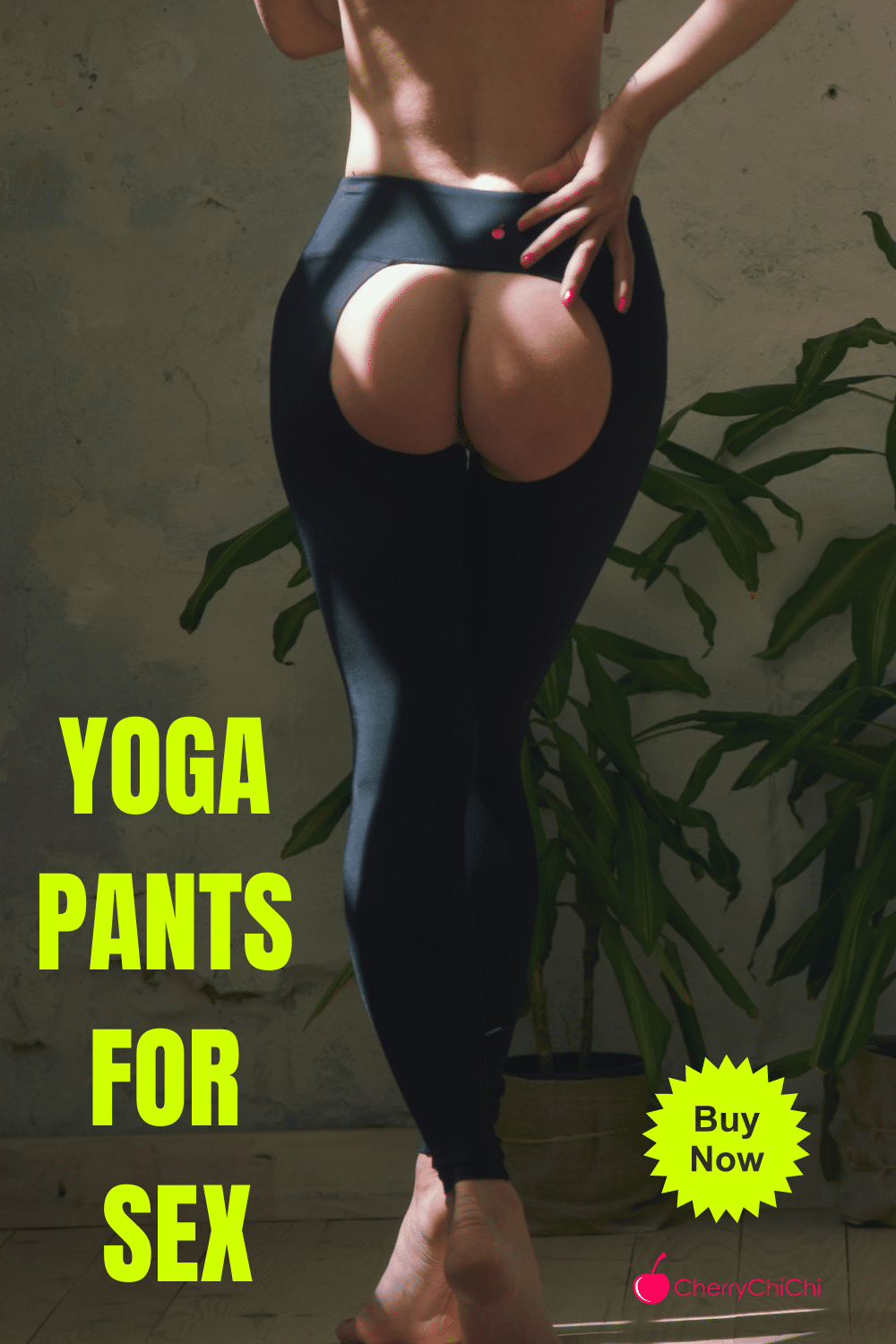
Leggings have become a popular clothing item in the US, but there is an ongoing debate about whether they should be banned in certain settings such as schools. Let’s explore the different perspectives and implications of this controversy.
Key Takeaways:
- The controversy surrounding leggings in schools revolves around dress code restrictions and societal norms.
- Supporters of banning leggings argue that they can be too revealing and distracting, while opponents believe it infringes on freedom of expression.
- Leggings in the fashion industry have been celebrated for promoting body positivity and inclusivity.
- Leggings contribute to environmental pollution due to the production and disposal of synthetic fabrics.
- Alternative solutions to banning leggings include educating students on appropriate attire and enforcing dress codes for all genders.
Leggings and Yoga Pants in Schools: A Dress Code Controversy
In recent years, there has been a growing dress code controversy surrounding the presence of leggings and yoga pants in schools across the United States. Some educational institutions have implemented clothing restrictions that specifically ban these items, citing concerns about modesty and distraction. This has ignited a passionate debate among students, parents, and educators about the fairness and effectiveness of such restrictions.
The proponents of banning leggings argue that they can be too revealing and may distract other students, particularly male students. They believe that stricter dress codes are necessary to maintain a focused learning environment and uphold societal norms of modesty. On the other hand, opponents criticize the ban as being unfairly targeted towards girls and undermining body positivity. They argue that students should have the freedom to express themselves through their clothing choices, as long as it does not disrupt the learning environment.
The controversy surrounding leggings and yoga pants in schools also raises concerns about students’ rights. The American Civil Liberties Union (ACLU) has voiced objections to the selective enforcement of dress codes, highlighting potential violations of students’ rights. They argue that unclear guidelines and subjective enforcement can lead to discriminatory practices. As a result, schools are faced with the challenge of finding a balance between maintaining a respectful learning environment and ensuring that students’ rights are protected.
| Arguments for Banning Leggings in Schools | Arguments against Banning Leggings in Schools |
|---|---|
| Leggings can be revealing and distracting to other students. | The ban unfairly targets girls and undermines body positivity. |
| Stricter dress codes promote a more focused learning environment. | Students should have the freedom to express themselves through their clothing choices. |
| Upholding societal norms of modesty is important. | Leggings do not disrupt the learning environment and should be allowed. |
As dress codes and societal norms continue to evolve, the future of leggings and yoga pants in schools remains uncertain. It is likely that schools will continue to grapple with finding a compromise that respects individual expression while maintaining a conducive learning environment. The ongoing controversy surrounding leggings in schools serves as a reminder of the delicate balance between upholding dress code policies and promoting inclusivity and body positivity.
Image:
Arguments for Banning Leggings in Schools
Leggings in schools have sparked a heated dress code controversy, with proponents of banning them arguing that they can be too revealing and distracting. They believe that stricter clothing restrictions promote a more focused learning environment and uphold societal norms of modesty.
Those in favor of banning leggings contend that they can be form-fitting and expose the contours of the body, potentially drawing attention away from academic pursuits. They argue that this distraction is particularly prevalent among male students and can hinder their ability to concentrate in the classroom. By implementing dress codes that prohibit leggings, these proponents believe that schools can create a more disciplined atmosphere that prioritizes education over fashion trends.
Advocates of banning leggings also emphasize the importance of upholding societal norms of modesty. They argue that by restricting the display of certain body parts, such as the buttocks and thighs, schools can help instill a sense of propriety and decorum among students. They believe that enforcing stricter clothing guidelines can teach young individuals valuable lessons about appropriate attire and prepare them for professional settings where similar dress codes are often in place.
Table: Arguments for Banning Leggings in Schools
| Arguments | Explanation |
|---|---|
| Reduces distractions | Banning leggings can eliminate potential distractions caused by revealing clothing, allowing students to focus on their studies. |
| Promotes discipline | Stricter dress codes help instill a sense of discipline and professionalism among students, preparing them for future social and professional environments. |
| Upholds societal norms | By prohibiting certain body-revealing clothing, schools can reinforce societal norms of modesty and appropriate attire. |
However, it is important to note that arguments for banning leggings in schools are not without controversy. Critics argue that such dress code restrictions disproportionately target and police girls’ bodies, perpetuating harmful gender stereotypes and body shaming. They believe that students should have the freedom to express themselves through their clothing choices, as long as it does not disrupt the learning environment.
While both sides of the debate present valid points, the controversy surrounding leggings in schools reflects a broader societal discussion about dress codes, societal norms, and individual expression. Striking a balance between maintaining a respectful learning environment and respecting students’ autonomy remains a challenge that educators and policymakers continue to grapple with.
Arguments against Banning Leggings in Schools
Leggings have become a staple in many people’s wardrobes, including students. While some argue that leggings should be banned in schools due to concerns about modesty and distraction, there are strong arguments against such restrictions. Opponents of the leggings ban believe that it unfairly targets girls and undermines body positivity.
One of the main arguments against banning leggings is the issue of fashion freedom. Students should have the right to express themselves through their clothing choices, as long as it does not disrupt the learning environment. Limiting students’ ability to wear leggings can be seen as a form of gender discrimination, as these restrictions predominantly affect girls. It sends the message that their bodies are inherently distracting or inappropriate, which can have a negative impact on their self-esteem and body image.
“Banning leggings in schools reinforces harmful gender stereotypes and perpetuates body shaming. We should be promoting body positivity and inclusivity, rather than policing what students can and cannot wear,” says Sarah Johnson, a high school teacher.
Moreover, opponents argue that enforcing a ban on leggings in schools may not effectively address the alleged concerns of modesty or distraction. Dress codes should focus on creating a respectful learning environment for all students, regardless of their clothing choices. Instead of singling out leggings, schools can implement comprehensive guidelines that apply to all types of clothing. This approach encourages respect, inclusivity, and understanding among students.
| Arguments Against Banning Leggings in Schools | |
|---|---|
| 1 | Leggings ban unfairly targets girls |
| 2 | Leggings ban undermines body positivity |
| 3 | Limiting fashion freedom and self-expression |
| 4 | Reinforcing harmful gender stereotypes |
| 5 | Enforcing a ban may not effectively address concerns |
Overall, the arguments against banning leggings in schools highlight the importance of promoting body positivity, respecting individual expression, and addressing dress code concerns in a fair and comprehensive manner. It is crucial for schools to find a balance that allows students to feel comfortable and confident while maintaining a respectful and focused learning environment.
Impact on Student Rights
The controversy surrounding the presence of leggings in schools goes beyond matters of fashion and dress codes. The American Civil Liberties Union (ACLU) has raised concerns about the impact of clothing restrictions on students’ rights. Selective enforcement of dress codes and subjective interpretations can lead to discriminatory practices, potentially violating students’ constitutional rights to freedom of expression and equal treatment.
The ACLU argues that vague guidelines and inconsistent enforcement create an environment where students may be unfairly targeted based on their gender or personal style choices. Without clear and objective criteria, the enforcement of dress codes becomes open to bias and interpretation, threatening the rights of students to express themselves through their clothing.
Creating a balanced approach that respects individuality while maintaining a respectful learning environment is crucial. Schools need to carefully consider the potential impact of their dress code policies on student rights, ensuring that any restrictions are reasonable, non-discriminatory, and promote a sense of inclusion and fairness for all.
It is essential for schools to take into account the concerns raised by the ACLU and other advocacy groups when shaping their clothing guidelines and enforcement practices. By adopting comprehensive, clear, and fair policies, schools can strike a balance that prioritizes both student rights and a conducive learning environment.
The Impact of Subjective Enforcement
“Students should not be subjected to discriminatory practices or have their rights violated based on subjective interpretations of dress codes. It is important for schools to uphold the constitutional rights of students while ensuring a respectful and inclusive learning environment.” – ACLU
Pros and Cons of Banning Leggings
Banning leggings in schools has sparked a heated debate, with valid arguments on both sides. Let’s take a closer look at the pros and cons of implementing such a ban.
Pros of Banning Leggings
- Better Focus: Supporters argue that banning leggings can create a more focused learning environment. By eliminating potentially distracting clothing choices, students may be less prone to paying attention to fashion trends and more engaged in their studies.
- Upholding Societal Norms: Advocates for the ban believe that it promotes modesty and upholds societal norms. They argue that leggings can be too revealing and may contribute to a sexualized atmosphere in schools. By enforcing stricter dress codes, they aim to create a more appropriate and professional environment.
- Reducing Gender Stereotypes: Some proponents argue that a ban on leggings can help reduce gender stereotypes. They claim that by restricting clothing options that are often associated with one gender, schools can encourage a more inclusive atmosphere where students are free to express themselves without conforming to traditional gender norms.
Cons of Banning Leggings
- Limiting Self-Expression: Opponents of the leggings ban argue that it limits students’ ability to express themselves. They believe that clothing choices are a form of personal expression and banning leggings can restrict students’ freedom to dress in a way that aligns with their individuality.
- Body Positivity: Many argue that a leggings ban unfairly targets girls and perpetuates body shaming. They believe that students should feel comfortable in their bodies and have the right to wear clothing that makes them feel confident, regardless of their size or shape.
- Potential Discrimination: Critics of the ban raise concerns about potential discrimination in dress code enforcement. They argue that strict dress codes can be selectively enforced, leading to disproportionate consequences for students from marginalized communities.
As with any controversial issue, the pros and cons of banning leggings in schools must be carefully considered. Striking a balance between maintaining a conducive learning environment and respecting students’ fashion freedom is crucial. It is important for schools to engage in open dialogue and find solutions that promote inclusivity, body positivity, and individual expression while ensuring a respectful and focused learning environment.
| Pros of Banning Leggings | Cons of Banning Leggings | |
|---|---|---|
| Focused Learning Environment | Eliminates potential distractions | May limit self-expression |
| Upholding Societal Norms | Promotes modesty | Perpetuates body shaming |
| Reducing Gender Stereotypes | Creates a more inclusive environment | Potential for discrimination |
Leggings in the Fashion Industry
Leggings have become a prominent fashion trend in recent years, embraced by many as a comfortable and versatile clothing option. They have revolutionized the fashion industry with their ability to effortlessly blend style and comfort. Whether it’s athleisure wear or high-fashion ensembles, leggings have made their mark on the runway and in everyday wardrobes.
One of the reasons leggings have gained such popularity is their ability to promote body positivity. Unlike traditional pants that may have rigid sizing options, leggings provide a stretchy and form-fitting silhouette that can flatter different body types. This inclusivity has resonated with consumers, as they find empowerment and confidence in embracing their natural curves.
The fashion-forward nature of leggings has also allowed for creative experimentation with different patterns, textures, and designs. From bold prints to faux leather finishes, leggings have become a canvas for self-expression. They can be dressed up with a flowing tunic or paired down with a casual t-shirt, making them a versatile choice for any occasion.
As the fashion industry continues to evolve, leggings have become a staple in many designer collections. Luxury brands have incorporated them into their offerings, elevating the status of this once casual clothing item. Celebrities and influencers alike have also played a significant role in propelling leggings to the forefront of fashion trends, solidifying their place in the industry.
Leggings in the fashion industry are not just a passing trend; they have become a symbol of comfort, body positivity, and style. Their continued presence on runways and in everyday fashion choices attests to their enduring popularity. As designers and consumers embrace leggings as a fashion staple, it is clear that they are here to stay.
Table: Evolution of Leggings in Fashion
| Decade | Trend |
|---|---|
| 1960s | Leggings as exercise apparel |
| 1980s | Leggings as fashion statement |
| 2000s | Rise of athleisure wear |
| 2010s | Celebrity endorsements and designer collaborations |
| 2020s | Mainstream acceptance and continued innovation |
Table: The evolution of leggings in fashion showcases the significant role they have played in different eras. From their origins as exercise apparel in the 1960s to their current status as a mainstream fashion staple, leggings have continuously transformed to meet the style demands of each decade.
Environmental Impact of Leggings
Leggings, like many other fast fashion items, have a significant environmental impact. The production and disposal of synthetic fabrics used in leggings contribute to environmental pollution. Harmful chemicals and microplastics are released into the environment during the manufacturing process, and these pollutants can have long-lasting consequences on ecosystems.
A study conducted by the Ellen MacArthur Foundation found that the fashion industry produces around 1.2 billion tons of greenhouse gas emissions every year. This includes the production of synthetic fabrics, such as nylon and polyester, which are commonly used in the manufacturing of leggings. These fabrics are derived from non-renewable resources and require large amounts of energy and water to produce.
Additionally, the disposal of leggings also poses environmental challenges. When synthetic fabrics are discarded, they do not biodegrade easily and can persist in landfills for years. As they break down, microplastics are released into the environment, further contributing to pollution. The accumulation of microplastics in water bodies can harm marine life and enter the food chain, posing risks to both ecosystems and human health.
| Environmental Impact | Solutions |
|---|---|
| Pollution from production and disposal | Encouraging sustainable fabric alternatives |
| Greenhouse gas emissions | Reducing carbon footprint through responsible manufacturing practices |
| Microplastic pollution | Promoting recycling and reducing single-use plastics |
“The environmental impact of fast fashion cannot be ignored. It’s important to consider the lifecycle of our clothing and the choices we make as consumers. By opting for sustainable alternatives and supporting responsible manufacturing practices, we can contribute to a cleaner and healthier environment.” – Environmental Advocate
To mitigate the environmental impact of leggings and other fast fashion items, there is a growing need for sustainable practices throughout the fashion industry. This includes promoting the use of organic or recycled materials, implementing recycling programs, and adopting circular economy principles. By making conscious choices and supporting brands that prioritize sustainability, we can help reduce the negative effects of leggings on our planet.
Alternatives to Banning Leggings
In response to the controversy surrounding leggings in schools, some educational institutions have opted for alternative approaches to address dress code concerns without outright banning the garment. These alternatives strive to strike a balance between allowing individual expression and maintaining a respectful and productive learning environment.
Education on Appropriate Attire
One approach is to educate students on what constitutes appropriate attire for different settings. This includes teaching them about dress code guidelines and the reasons behind them. By providing clear explanations and context, students can better understand the importance of dressing appropriately and the impact it has on themselves and others.
Enforcing Universal Dress Codes
Another solution is to establish uniform dress codes that apply to all genders. This eliminates any potential gender bias in the enforcement of dress code policies and ensures that clothing restrictions are based on maintaining a respectful environment rather than targeting specific garments or individuals. A universal dress code can help create a more inclusive atmosphere where everyone is held to the same standards.
By implementing these alternatives, schools aim to promote a sense of responsibility, respect, and inclusivity among students. It encourages them to make informed decisions about their clothing choices while still respecting the guidelines put in place to maintain a suitable learning environment.
The Future of Leggings in Schools
Leggings have become a staple in the wardrobes of many individuals, including students. The ongoing debate surrounding leggings in schools raises questions about the future of this controversial clothing item. As dress codes and societal norms continue to evolve, the place of leggings within educational institutions remains uncertain.
Evolving dress codes reflect society’s changing attitudes towards fashion and self-expression. Schools are recognizing the importance of accommodating diverse styles while maintaining a respectful learning environment. Consequently, the future may see a shift towards dress codes that embrace more inclusive guidelines, allowing students to express their individuality without compromising professionalism.
However, achieving a balance between personal expression and the maintenance of a focused learning environment is not without challenges. Schools need to consider the potential distractions certain clothing choices may pose to both students and educators. As the future unfolds, educational institutions will likely continue to explore creative solutions that address these concerns while respecting the rights and uniqueness of every student.
In navigating the future of leggings in schools, it is essential to remember that clothing choices are not solely a matter of fashion. They reflect societal norms, cultural diversity, and personal identity. The education sector must adapt to the changing landscape of fashion trends while ensuring that students feel comfortable and supported in expressing themselves.
Ultimately, the future of leggings in schools will be shaped by ongoing dialogue and a willingness to find common ground. As dress codes continue to evolve, fostering an environment that promotes respect, inclusivity, and understanding remains a primary goal. By embracing these values, schools can create an atmosphere where students feel empowered to express themselves authentically while maintaining a conducive space for learning.
Conclusion
The debate surrounding whether leggings should be banned in schools reflects the ongoing controversy over dress codes, societal norms, and fashion freedom. It presents a clash between the desire to maintain modesty and create an inclusive and body-positive environment. As schools continue to grapple with this issue, finding a middle ground that respects individual expression while setting reasonable guidelines is crucial.
Dress code controversies have sparked discussions about societal norms and their impact on students. While some argue for banning leggings to uphold traditional standards of modesty, opponents believe that such restrictions unfairly target girls and hinder body positivity. A balanced approach that allows self-expression without disrupting the learning environment is necessary.
It is important to consider the broader implications beyond the scope of schools. Leggings have become a prominent fashion trend, celebrated for their comfort and inclusivity. However, their production and disposal contribute to environmental pollution, highlighting the need for sustainable alternatives in the fashion industry.
As dressing norms and codes continue to evolve, the future of leggings in schools remains uncertain. Striking a balance between maintaining a conducive learning environment and respecting students’ individuality is crucial. By promoting education on appropriate attire and encouraging dialogue, schools can foster an environment that values both fashion freedom and mutual respect.
FAQ
Are leggings banned in some schools in the US?
Yes, some schools have dress codes that ban leggings and yoga pants.
Why are leggings banned in schools?
Leggings are banned in schools due to concerns about modesty and distraction.
What are the arguments for banning leggings?
Supporters argue that leggings can be too revealing and distract others, especially male students. They believe stricter dress codes promote a more focused learning environment and uphold societal norms of modesty.
What are the arguments against banning leggings?
Opponents argue that the ban unfairly targets girls and undermines body positivity. They believe students should have the freedom to express themselves through their clothing choices, as long as it does not disrupt the learning environment.
Are there concerns about selective enforcement of dress codes?
Yes, the American Civil Liberties Union (ACLU) has raised concerns about selective enforcement of dress codes and the potential violation of students’ rights. They argue that unclear guidelines and subjective enforcement can lead to discriminatory practices.
What are the pros and cons of banning leggings?
Banning leggings may promote a more conservative dress culture and reduce distractions, but it can also limit self-expression and reinforce gender stereotypes.
What is the impact of leggings on the fashion industry?
Leggings have become a prominent fashion trend, celebrated for promoting body positivity and inclusivity in the fashion industry.
What is the environmental impact of leggings?
Like many fast fashion items, leggings contribute to environmental pollution through the production and disposal of synthetic fabrics, which release harmful chemicals and microplastics into the environment.
Are there alternatives to banning leggings?
Instead of outright banning leggings, some schools have implemented alternative solutions such as educating students on appropriate attire and enforcing dress codes that apply to all genders.
What is the future of leggings in schools?
The future of leggings in schools remains uncertain as dress codes and societal norms continue to evolve.










